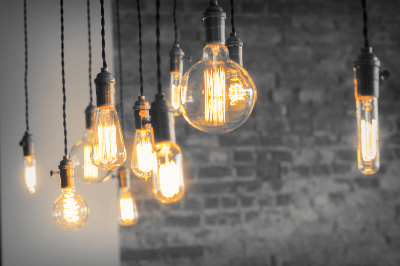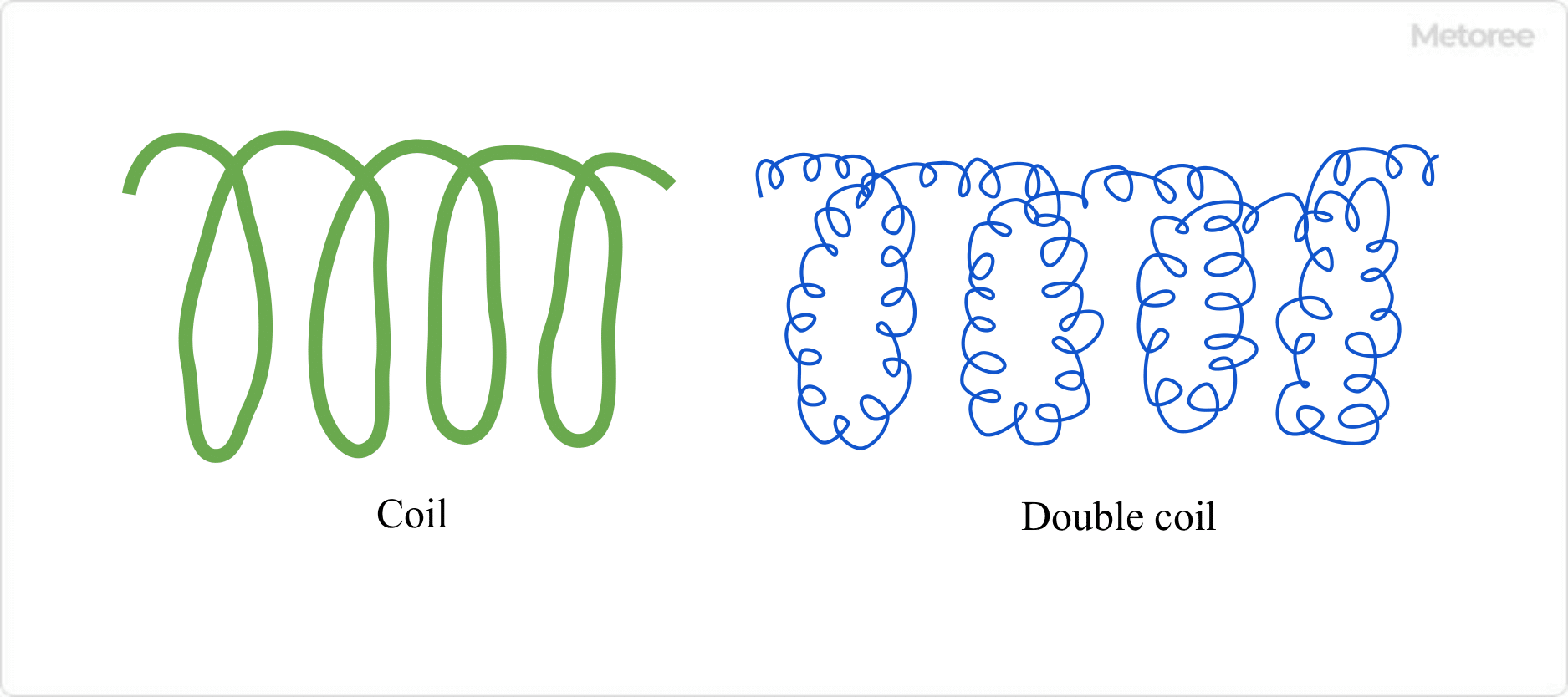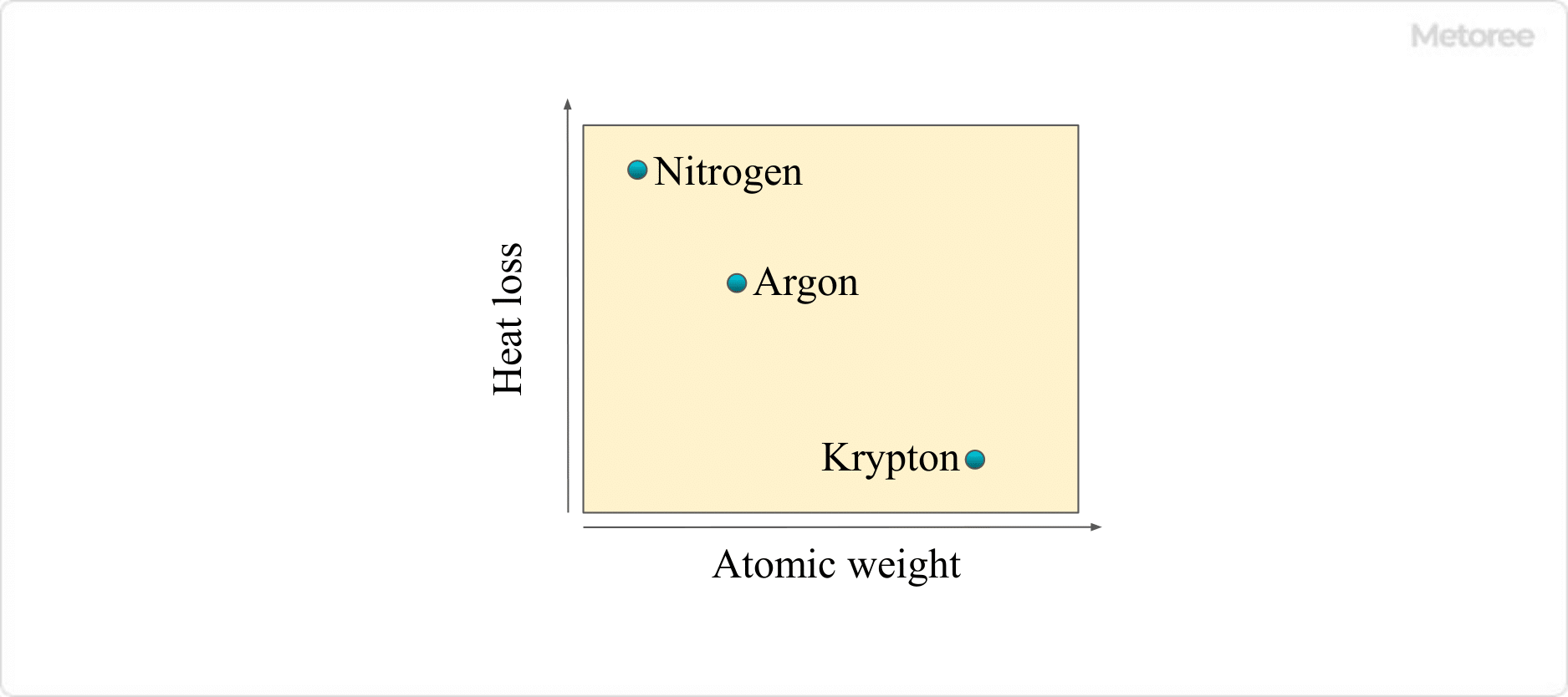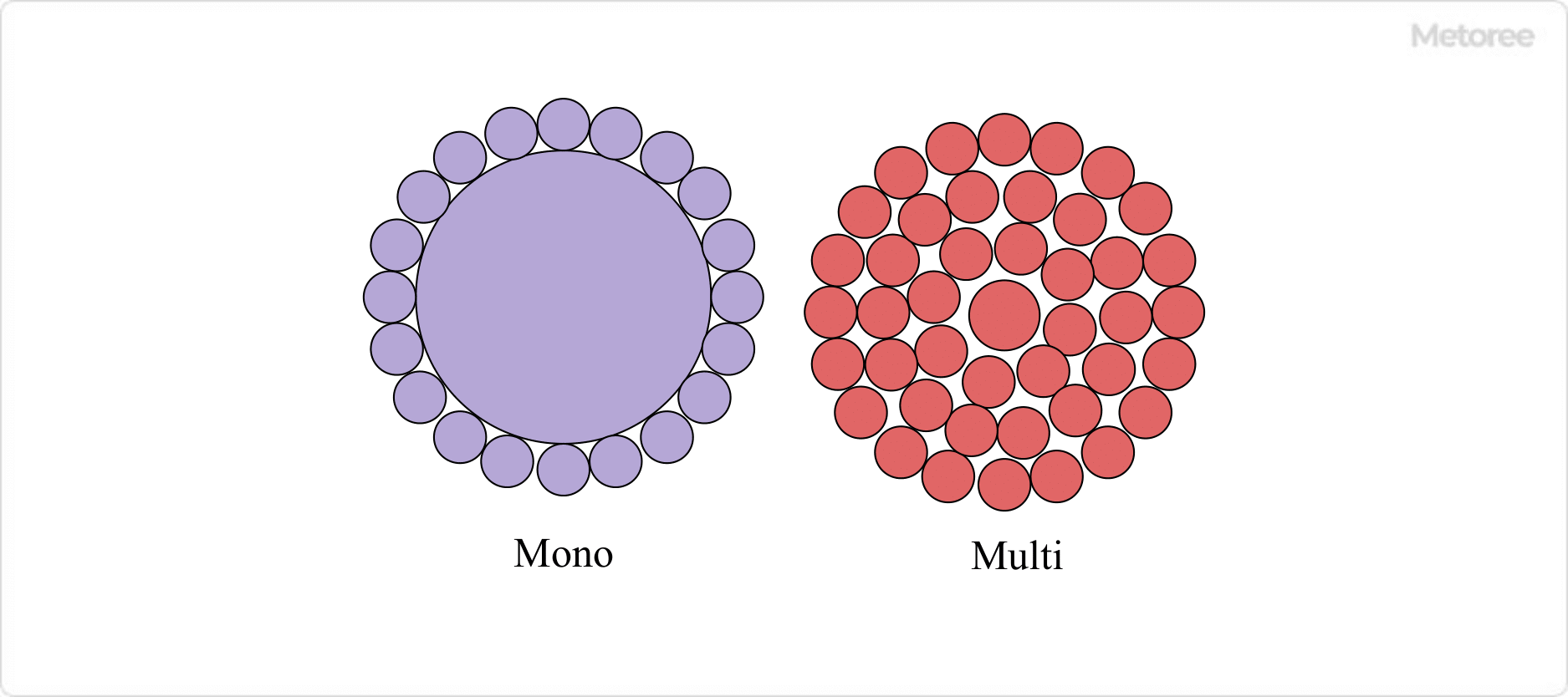All Categories
History












This section provides an overview for filaments as well as their applications and principles. Also, please take a look at the list of 15 filament manufacturers and their company rankings. Here are the top-ranked filament companies as of July, 2025: 1.ColorFabb BV, 2.Enky3dp, 3.Lumileds Holding B.V..
Table of Contents
【Thesis】
・Structure and Spin State of Iron(II) Assembled Complexes using 9,10-Bis(4-pyridyl)anthracene as Bridging Ligand
※first author
・Spin-crossover Phenomenon and Intermolecular Interaction for the Assembled Fe(II) Complexes Having Aromatic Rings
※first author
・On/off Spin-crossover Phenomenon and Control of the Transition Temperature in Assembled Iron(II) Complexes
https://www.linkedin.com/in/%E5%92%B2%E6%A8%B9-%E5%85%A5%E6%B1%9F-a2218923b/

A filament is the light-emitting part of a lighting device such as a white bulb. It is a resistive element located inside a glass bulb and shaped like a long, thin wire. A filament emits light when heated by an electric current.
When first invented, the filament was called a carbon bulb because carbonized paper was used as the material. However, the filament burned out as soon as it glowed for about one minute, and it was not at a level where it could be used in everyday life.
Therefore, today, a metal called tungsten is almost exclusively used.
Filaments are used as light sources for lighting bulbs.
Incandescent light bulbs are well-known as the main use of filaments. The filaments are made of coiled thin tungsten wire. However, many recent general lighting bulbs use double coiled filaments to prevent heat loss.

Figure 1. Coil and Double coil
There are many different types of incandescent bulbs, including halogen bulbs, mini-krypton bulbs, and fluorescent bulbs. The inside of the glass bulb is filled with an inert gas to prevent evaporation of the filaments (e.g., argon, nitrogen, krypton, xenon).
Some also exist with a vacuum inside, and incandescent bulbs produce different colors and intensities of light depending on the type of gas. In recent years, some incandescent bulbs other than halogen and mini krypton bulbs have been discontinued because of their poor energy efficiency.
In addition, due to this energy efficiency, light-emitting diodes called LEDs (light emission diodes) are increasingly being used these days.
Filaments LED bulbs are bulbs in which the filaments are reproduced by LEDs. Filament LED bulbs are characterized by their dim brightness.
The reason is that they use long, thin, thread-like LEDs. In addition, many models do not have a heat dissipating part called a heat sink. Therefore, there is a design limitation that prevents the use of LEDs with very high power. The main applications of LED bulbs are for supplementary lighting and joint lighting.
On the other hand, general LED bulbs can use larger LED chips and are often brighter than filament LED bulbs.
Filaments LED bulbs have a longer lifespan than incandescent or fluorescent light bulbs, but a shorter length than general LED bulbs. Specifically, it is around 15,000 hours. Since a typical LED bulb lasts 30,000 to 40,000 hours, this is about half the lifespan of a typical LED bulb.
Incandescent bulbs use the principle that an electric current flows through filaments to generate Joule heat, which radiates heat and emits light. Joule heat is the heat energy generated when an electric current is passed through a conductor.
Therefore, to make the bulb usable for a long time, the filaments must be made of a material with high resistance and high heat resistance. Otherwise, the filaments themselves will not be able to withstand the heat and will burn, making them unusable as a light source.
Tungsten has an extremely high melting point of 3,653K (3,379°C), the highest among the metallic elements. Therefore, it does not melt even when heated by Joule heat. This is why tungsten is often used for filaments.
The inside of the bulb is filled with an inert gas, which ensures that the bulb has a long service life. However, the inert gas also removes heat from the filaments (heat loss) through thermal conduction and convection of the gas itself. As shown in Figure 2, the relationship between enclosed gas and heat loss tends to be smaller for elements with a larger atomic weight.

Figure 2. Enclosed gas and heat loss
In 1879, Edison invented the practical incandescent light bulb. At that time, the filament material used was Japanese bamboo. Bamboo was suitable as filament material because of its thick fibers, strength, and longevity.
When the light bulb was first developed, Edison used a filament made of carbonized cotton thread coated with soot and tar and succeeded in keeping the bulb lit continuously for 40 hours. However, from the standpoint of practicality, it was essential to develop a light bulb that could continue to light for even longer.
Therefore, we repeated experiments to investigate the lighting time by using various familiar materials, such as paper and thread as filaments. In the process, we found a souvenir fan from Japan and made a light bulb with filaments made of bamboo used as the framework of the fan.
When he conducted lighting experiments with that light bulb, he found that the lighting time was longer than with previous materials and reached a level of practicality. Edison then proceeded to conduct lighting experiments using various types of bamboo from around the world to find the best bamboo for the filaments.
He found that when Hachiman bamboo from Kyoto, Japan, was used, the light stayed lit for an average of more than 1,000 hours, leading to its practical application.

Figure 3. Monofilament and multifilament
The word filament is used to refer to the light source part of a light bulb, and a long continuous fiber, like silk, is called filament yarn.
Filament is a word that originally meant something fibrous. On the other hand, spun yarn is made by aligning short fibers parallel to each other, like cotton yarn, and twisting them to make a single strand.
Filament yarn comes in two types: monofilament and multifilament. The former is a single long strand of yarn, like a fishing line. The latter refers to a single thread made by twisting dozens of threads together. In natural fibers, silk thread falls into this category. Raw silk is made from unraveled cocoons exhaled by silkworms, and silk thread is made from cleaned cocoons.
There is no particular type of spun yarn, and almost all natural fibers, such as cotton and hemp, fall under this category.
*Including some distributors, etc.
Sort by Features
Sort by Area

Lumileds Holding B.V., started in 1999 and headquartered in San Jose, USA, is a lighting solutions manufacturer with over 30 commercial offices in Europe, Asia, and the Americas. Its product portfolio includes aftermarket automotive lighting, camera flash for mobile devices, and light sources for general illumination. All its manufacturing sites are ISO 45001 and 14001 certified, and its halogen lamps are produced and controlled by ISO 9001 and IATF standards. It is the inventor of Xenon technology, providing the highest lumen output between 2,000lm and 3,200lm from a single light source.

Nanhua Electronics Co., Ltd., founded in 1990 and located in Shanghai, China, is a manufacturer of rugged signal, lighting, and control products for hazardous working environments. The company's signal product range, developed for industrial sites and hazardous environments, can increase production efficiency and includes obstruction lights and wind sensors. Other devices include rugged PA siren alarms and warning beacons. The company has experience supplying mining machinery, rail transit systems, and wind farms.

Texelco SRL, founded in 1970 and headquartered in an industrial area between Milan, Varese, and Como, Italy, is a manufacturer of safety components and systems for the automation of industrial plants and machinery. The company's shock- and vibration-resistant magnetic sensors are used in industrial applications. These products can also be mounted behind non-magnetic materials as the active component in machine safety buttons. It also manufactures visual components, including stack lights, audio and optical combined indicators, and LED light bulbs, used on machinery and equipment, as well as installed through operating plants.

Enky3dp, which is based in Sainte Sigolene, France, is a manufacturer of several thermoplastic compound filaments that are specifically intended for 3D printing. The company specializes in making 3D printer wires with two types of diameters, which are 1.75 and 1.8 mm, to be sold to its customers. Its 3D printer wires are designed from biodegradable raw materials that are more environmentally friendly than certain other filaments and do not emit any unpleasant synthetic odor.

ColorFabb, which was established in 2013 and is headquartered in Belfeld, the Netherlands, is a manufacturer of 3D printing filaments. The company manufactures lightweight PLA filaments, TPU filaments, and lightweight PLA with increased temperature resistance. It also crafts less brittle PLA filaments as well as high steel content filaments. Its lightweight PLA filaments are feather-light, yet retain good strength and are easy to cut, trim, and sand, which make it suitable for printing RC planes and cosplay.

Fiberlogy, which is headquartered in Brzezie, Poland, is a manufacturer of a large array of filaments for FFF/FDM printers. The company manufactures hard filaments, co-polyester that has high mechanical and temperature resistance, and PET enriched with the addition of glycol. It also produces high-layer bondability filaments as well as filaments accompanied by an intriguing scent reminiscent of wood. Its hard filaments have high impact resistance and are also resistant to high temperatures and abrasion.

Sirena S.p.A., founded in 1974, is a manufacturer of signaling devices based in Rosta, Turin, Italy. The company introduced the first patented rotating beacons marketed under the ROTALLARM brand and has since expanded its portfolio to include industrial acoustic devices, such as electronic sirens, buzzers, and backup alarms. It also produces visual devices like industrial beacons, forklift signaling devices, and traffic lights. The company further provides signal towers, bases for modular devices, and fixing accessories. Serving customers in over 70 countries, the company collaborates with more than 100 distribution partners, specifically catering to the automotive industry.

Werma Signaltechnik GmbH + Co. KG, established in 1950 and headquartered in Norcross, USA, is a manufacturer of visual and acoustic signaling devices. The company's products include signal towers, beacons, and sirens, enhancing safety and efficiency across mechanical engineering, machine safety, and clean room environments. Its products offer flexibility, visibility, and easy installation, catering to individual workstations and entire buildings. Its signal towers can be transformed into machine data acquisition systems, aligning with Industry 4.0 trends. The company has received the "TOP 100" seal of approval, acknowledging its social engagement within the German SME sector in 2024.
TREED, which is located in Seregno, Italy, is a manufacturer of a large selection of 3D filaments to be sold to its customers. The company crafts filaments used in the electrical and electronic sector, polymers mixed with marble powders, and polymers mixed with stone powders. It also fabricates polyphenylene sulfide added with 25% glass fiber and filaments consisting of high-density HDPE polyethylene. Its filaments that are used in the electrical and electronic sector are highly functional and shielding materials used in the printing of insulating and protective materials.

Forward AM, which was started in 2017 and is based in Heidelberg, Germany, is a manufacturer of 3D printing materials and a supplier of pertinent services. The company specializes in making powders, plastic filaments, metal filaments, photopolymers, and photopolymers. It also delivers 3D services, 3D software, and 3D consulting services to its customers. The variant of its powders, thermoplastic polyurethane powders, are suitable for the production of parts requiring shock absorption, energy return, or flexibility.

Domo SRL, founded in 1978 and headquartered in Milan, Lombardy, Italy, is a specialist modular signaling and control device developer, manufacturer, and supplier. The company's products include LED indicators, LED lamps, and acoustic signaling devices. It also produces mosaic mimic panels, annunciator panels, and switchgear. These products are used to create custom and flexible monitoring and control equipment for power plants, natural gas distribution stations, and most industrial processing plants. The company's services include the supply of accessories and spare parts and product customization.



Geti. EU, established in 2016 and headquartered in Opava, Czech Republic, is a supplier that offers a wide range of proven electrical engineering products for households and companies. The company's products include LED strips, batteries, aroma diffusers, dehumidifiers, table lamps, and more. It also offers a search platform with alert functions based on various datasets, magnifiers, and safes with an electronic lock. Its product enables users to build models rapidly and accelerate innovation across their businesses with AI. Its products and services are relevant to various industries, including energy, aviation, and technology.
Ranking as of July 2025
Derivation Method| Rank | Company | Click Share |
|---|---|---|
| 1 | ColorFabb BV |
30.4%
|
| 2 | Enky3dp |
14.2%
|
| 3 | Lumileds Holding B.V. |
11.5%
|
| 4 | Fiberlogy |
8.8%
|
| 5 | Forward AM |
8.8%
|
| 6 | TREED |
6.8%
|
| 7 | Apple Tree Co., Ltd. |
5.4%
|
| 8 | TEXELCO srl |
4.7%
|
| 9 | Nanhua Electronics Co., Ltd. |
2.7%
|
| 10 | WERMA Signaltechnik GmbH + Co. KG |
2.0%
|
Derivation Method
The ranking is calculated based on the click share within the filament page as of July 2025. Click share is defined as the total number of clicks for all companies during the period divided by the number of clicks for each company.Number of Employees
Newly Established Company
Company with a History
*Including some distributors, etc.
*Including some distributors, etc.
| Country | Number of Companies | Share (%) |
|---|---|---|
 United States of America
United States of America
|
1 | 11.1% |
 China
China
|
1 | 11.1% |
 Italy
Italy
|
1 | 11.1% |
 France
France
|
1 | 11.1% |
 Netherlands
Netherlands
|
1 | 11.1% |
 Poland
Poland
|
1 | 11.1% |
 Germany
Germany
|
1 | 11.1% |
 Japan
Japan
|
1 | 11.1% |
 Czech Republic
Czech Republic
|
1 | 11.1% |
34 products found
34 products
STE Co., Ltd.
1020+ people viewing
Last viewed: 12 hours ago
In 2013, we launched the first filament LED light bulb in Japan in partnership with a company that holds the patent for LED filament light bulbs. ...
2 models listed
STE Co., Ltd.
3790+ people viewing
Last viewed: 26 minutes ago
In 2013, we launched the first filament LED light bulb in Japan in partnership with a company that holds the patent for LED filament light bulbs. ...
10 models listed
Withap Kaiyosha Co., Ltd.
140+ people viewing
Last viewed: 1 day ago
C-6 shaped filament is often used for stop lamps, direction indicator lamps, backup lamps, and small lamps other than headlights. Additionally, C-2...
La Porta Co., Ltd.
1540+ people viewing
Last viewed: 6 hours ago
The LED filament bulb LET is an LED bulb that reproduces the warm homogeneous light and shape, and the appearance of the incandescent light bulb by...
6 models listed